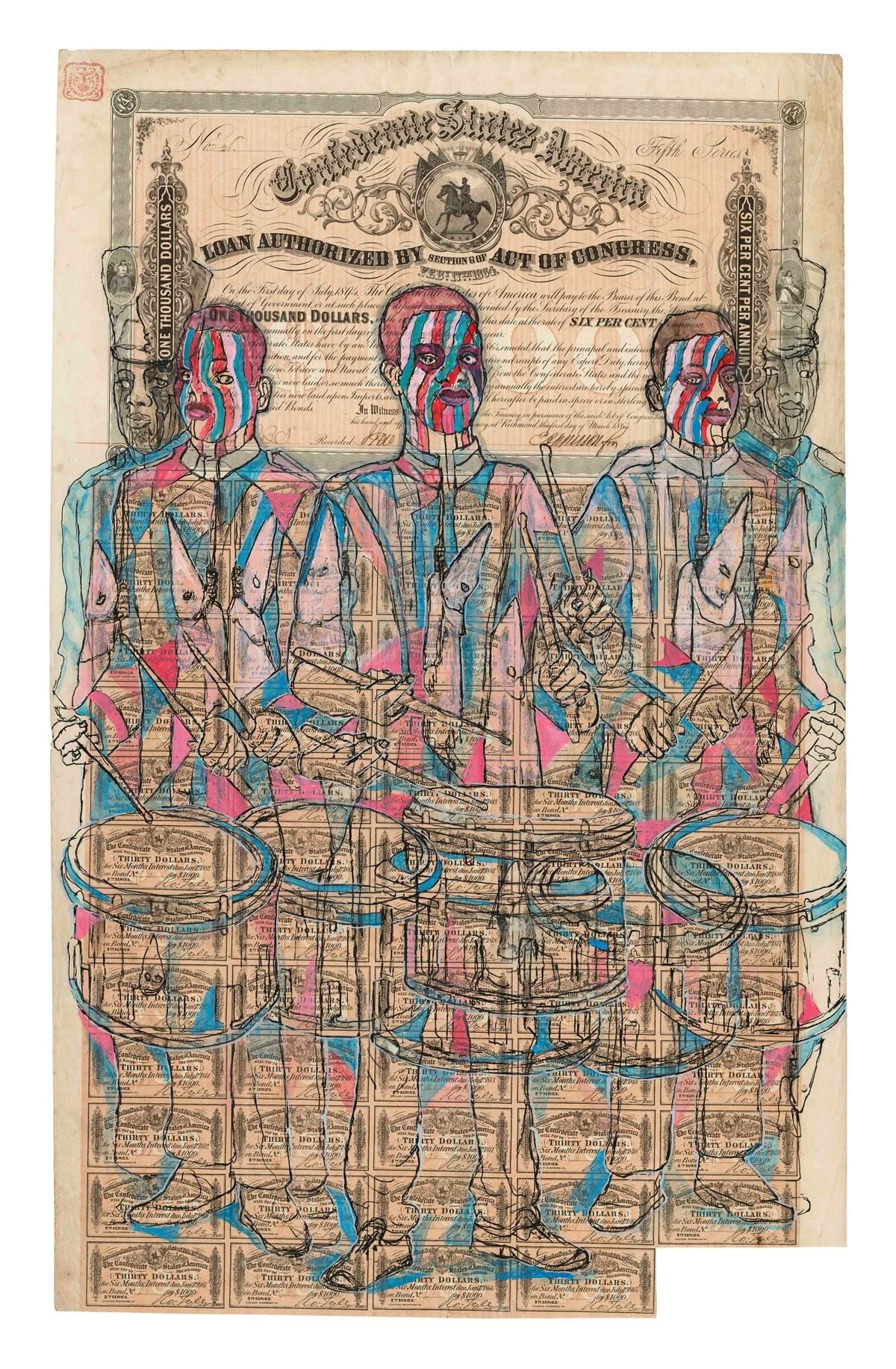Sheida Soleimani
"Medium of Exchange"
CUE Art Foundation
New York, 137 West 25th Street
Titled Medium of Exchange, the exhibition presents sculptural photographic tableaus that address the relationship between dictatorships and the petroleum industry at a time when oil has become a form of international currency and a source of warfare.
Sheida Soleimani, People’s Minister of Petroleum, Venezuela, 2017. Archival pigment print, 60 x 40 inches
Soleimani photographs models wearing oversized masks depicting the faces of the all-male ministers of the Organization of the Petroleum Exporting Countries (OPEC) and the Western officials who together control the oil industry and maintain its prices, as well as leaders of countries implicated in conflicts surrounding the oil trade. Photographed in solitary portraits and group photos against backdrops composed of found images of oil fields and refineries and strewn with props such as diamonds, exotic animals, oil, and its related paraphernalia, her characters are variously engaged in bizarre acts of decadence, excess, and aggression. In group portraits, the power plays between the represented countries are illustrated through references to sexual scenarios from BDSM culture, with the dominant authority marked with a “D” and the submissive player marked with a “S.” The artist employs queer models of all shapes, sizes, and genders whose anonymous bodies, decidedly distinct from those of the men whose faces they are wearing, peek through holes in their masks and costumes in jarring ways. These breaches in the construct of Soleimani’s characters serves to expose the bodies of those in power to symbolic acts of violence as well as subvert their traditional displays of masculinity and authority; at the same time, it reveals the bodies of those that might suffer at the hands of men in power as they accrue wealth through brutal acts of exploitation against humanity and the earth. The paper backdrops call to mind the notion of a paper tiger, while the lack of depth and structural integrity of these constructed environments seems to ruminate on the flimsy and untenable structure of the oil industry.
Soleimani’s fragmented narratives conflate reality and fantasy alongside brutality and the absurd to explore a crisis of power and social and environmental justice. As the artist herself states, “The photographs and screenplays use the tactics of theatre and humor to scrutinize the corruption stemming from the oil trade, while suggesting a new way to view the codependence of leaders.”







